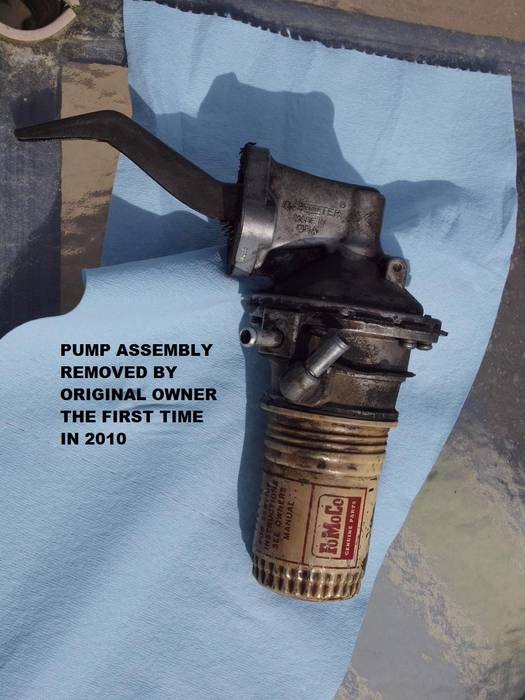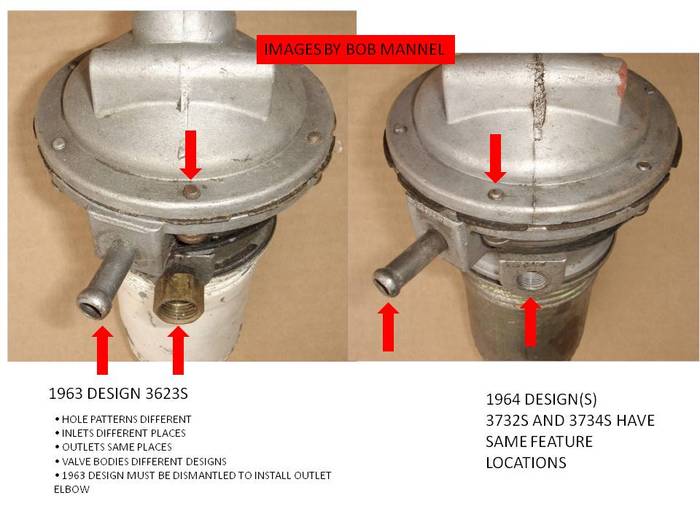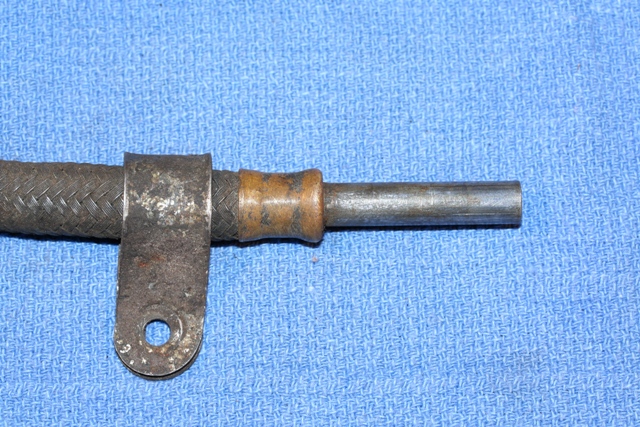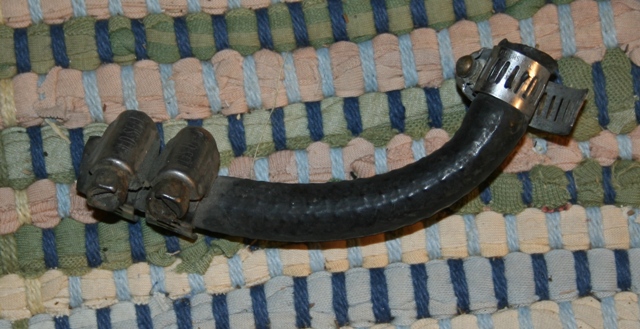One of the subjects that I get inquiries about fairly regularly is, ‘What fuel pump did HP289 powered Cobras come new with?’ The question comes around often enough that I thought I would post an section from my Cobra engine notes here and create a photo album on this site for support.
At this time I don't know much about the 1962 Fairlane 260 V8 application pump used with chassis through CSX2125 if fitted with a mechanical pump day one. What follows covers CSX2126 and later chassis.
http://www.clubcobra.com/photopost/s...y.php?cat=3255
From Cobra engine notes commentary:
G. Fuel pump and filtration:
a. Chassis CSX2126 and later wise all known to date 289 High Performance powered Cobras street and race used the stock 1963 Fairlane model year 260/289 V8 engine CarterŽ model 3623S pump with integral fuel filter. The earliest dated assembly of this number that I have found was produced in December 1962, which corresponds to the timing of the introduction of the HP289 engines in Ford Fairlanes and Cobras. HP289 parts production did not go into mass production unit circa late February early March 1963. This includes what were otherwise 1964 and 1965 model year engines used in new Cobras, i.e. new Cobras received the 1963 model year design long after it was discontinued for standard Ford 260/289/HP289 V8s. Engines installed in Cobras after Ford dropped this 3623S model in their production normally have 3623S pumps dated in a specific 1963 time frame. There were two 1963˝ model pump runs made months later during the 1964 model year of pumps based on collected data that were most likely just for new Cobras.
b. Engine installers cut the stock fuel pump outlet steel tube line above the pump. Modifications to pump assemblies changed the location of pump outlets too much for the full length 1963 Fairlane design O.E. steel line to work.
c. Pumps were modified by partially dismantling them to rotate the valve body of the fuel pump forward and making the addition of an EelcoŽ brand (typical) elbow fitting to the pump outlet.

Note: There are at least two versions of EELCO marked die cast
zinc elbow fittings in the size and threads to fit Cobras. The two known versions were clearly made in two different molds. The real obvious difference between these two versions is which side of the part the Eelco logo is cast into. Those originally used in Cobras have so far all been one particular version.
d. A section of rubber fuel line was used as a jumper between the elbow fitting on the pump and the shortened Ford steel fuel line. The hose was usually secured with Murray brand adjustable band hose clamps. Some factory pictures taken during engine installations manage to show the modified steel lines ending (actually starting as fuel flow was up towards the carburetor) above the pumps and stock Fairlane fuel line clamps at the water pumps without fixing clamps and screws in place, i.e. the lines were not secured by the stock clamps but the brackets were still in place. It is not known if later in the engine installations whether or not the clamps and screws were put back into use. From my own experience, without the clamp in securing the line normal vibration can loosen the line at the carburetor and allow fuel leakage in a dangerous area. Occasionally an unrestored car is found with the bracket at the water pump without the screw and clamp. This really doesn’t mean much because usually the cars have non-stock induction systems and fuel lines in place. Did the engine installers leave all of the clamps off, some of the clamps off, or reinstall all of the clamps. We will never know.
e. Street and race cars used the same mechanical pump and modifications, i.e. rotated valve body and add an elbow fitting.
Additional comments.
Ford had two new models of pumps created during the 1964 model year run, the 3732S and the 3734S. While similar to the earlier 3623S pumps one cannot get either 1964 models to “fit” a Cobra chassis exactly the same way. Engine installers rotated the valve bodies in 3623S pumps to gain clearance from a chassis interference. Rotating the bodies of either 1964 model does not get the same results.


F.Y.I..….. The fuel line terminus for the supply line from the fuel tank that AC Cars installed in street cars did not have a SAE bead or barb on it to aid in securing a rubber hose.

A short section of rubber hose was required to join the AC Cars fuel line and the Carter fuel pump. Pictured below is the original jumper hose for CSX2367 with its SAI installed hose clamps still in place. Note that SAI used two (2) clamps to secure the rubber hose to the AC Cars installed line end.
